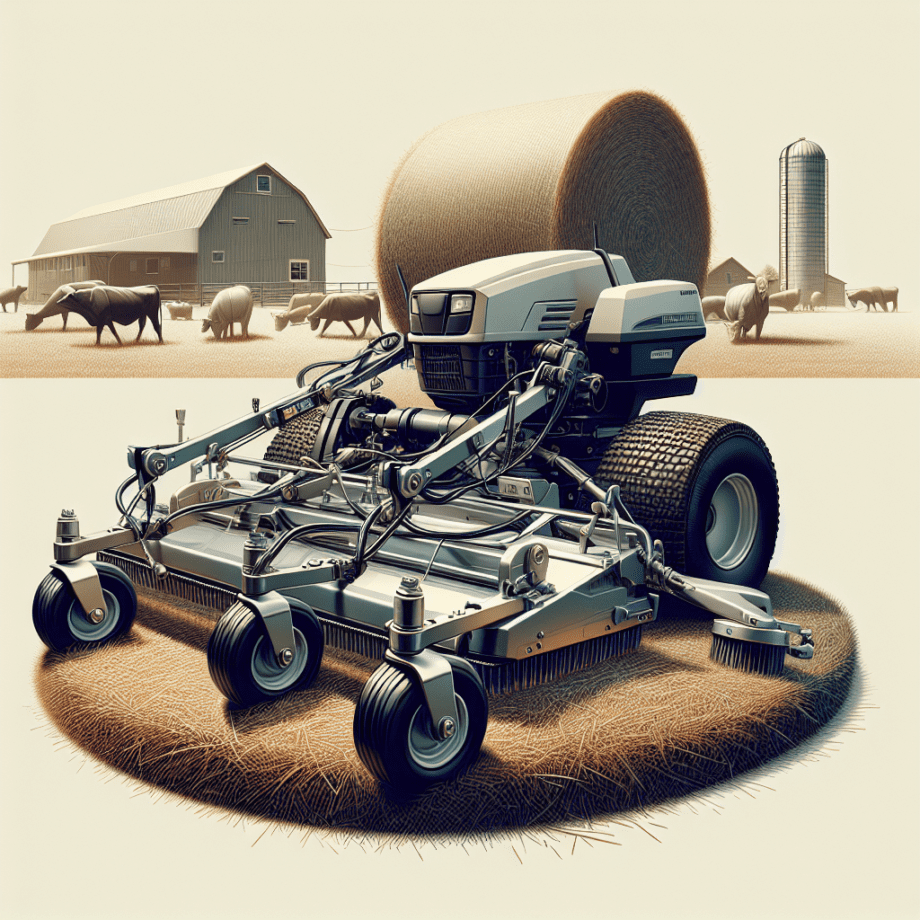Mowers and hay equipment are essential tools for livestock farms, playing a crucial role in ensuring the health and productivity of the animals. These machines not only help in maintaining pastures but also in harvesting and storing hay, which is a vital feed resource for livestock during the non-grazing seasons.
The Importance of Mowers in Livestock Farming
Mowers are indispensable in livestock farming for several reasons. Primarily, they are used to maintain pastures by cutting grass and other vegetation to an optimal height. This practice is essential for promoting healthy grass growth, which in turn provides nutritious forage for grazing animals. Regular mowing helps in controlling weeds and preventing the spread of invasive plant species that could potentially harm livestock or reduce the quality of the pasture.
Types of Mowers
There are various types of mowers available, each designed for specific tasks and conditions. The most common types include:
- Rotary Mowers: These are versatile and can handle a wide range of vegetation, from grass to small shrubs. They are ideal for maintaining large pastures and can be attached to tractors for efficient operation.
- Sickle Bar Mowers: Known for their precision, sickle bar mowers are excellent for cutting hay and other forage crops. They use a reciprocating blade mechanism to cut vegetation cleanly and are often used in conjunction with hay equipment.
- Flail Mowers: These mowers are designed to handle tougher vegetation and uneven terrain. They use a series of small blades attached to a rotating drum to chop vegetation into small pieces, making them suitable for clearing overgrown areas.
Benefits of Regular Mowing
Regular mowing offers several benefits for livestock farms:
- Improved Forage Quality: By cutting grass at the right time, farmers can ensure that the forage remains nutritious and palatable for livestock.
- Weed Control: Mowing helps in controlling weeds, which can compete with desirable forage plants for nutrients and water.
- Pest Management: Regular mowing can reduce the habitat for pests such as ticks and flies, thereby improving the health of the livestock.
- Enhanced Pasture Growth: Mowing stimulates new growth in grasses, leading to a more productive and sustainable pasture.
Hay Equipment: Ensuring a Steady Supply of Feed
Hay equipment is equally important in livestock farming, as it allows farmers to harvest, process, and store hay for use during periods when fresh pasture is not available. Hay is a critical feed resource, especially during winter or drought conditions when grazing is limited.
Types of Hay Equipment
Several types of hay equipment are used in the process of making and storing hay:
- Mowers: As mentioned earlier, mowers are used to cut the forage crops at the right stage of growth to ensure high-quality hay.
- Tedders: These machines are used to spread and fluff the cut forage, promoting faster and more even drying. Proper drying is essential to prevent mold and spoilage in the stored hay.
- Rakes: Rakes gather the dried forage into windrows, making it easier for the baler to pick up and process the hay.
- Balers: Balers compress the dried forage into compact bales for easy handling, storage, and transportation. There are different types of balers, including round balers, square balers, and large square balers, each suited to specific needs and preferences.
- Wrappers: In some cases, farmers use wrappers to encase the bales in plastic, creating silage bales that can ferment and be stored for longer periods.
Benefits of Using Hay Equipment
Using hay equipment offers numerous advantages for livestock farmers:
- Consistent Feed Supply: By harvesting and storing hay, farmers can ensure a steady supply of feed for their livestock, regardless of seasonal changes or adverse weather conditions.
- Cost Savings: Producing hay on the farm can be more cost-effective than purchasing feed, especially when considering transportation and market fluctuations.
- Quality Control: Farmers have control over the quality of the hay, ensuring that it meets the nutritional needs of their livestock.
- Reduced Waste: Properly baled and stored hay reduces the risk of spoilage and waste, maximizing the use of available forage resources.
Conclusion
In conclusion, mowers and hay equipment are vital tools for livestock farms, contributing significantly to the health and productivity of the animals. By maintaining pastures and ensuring a steady supply of high-quality hay, these machines help farmers manage their resources efficiently and sustainably. Investing in the right equipment and using it effectively can lead to improved forage quality, better livestock health, and overall farm profitability.
